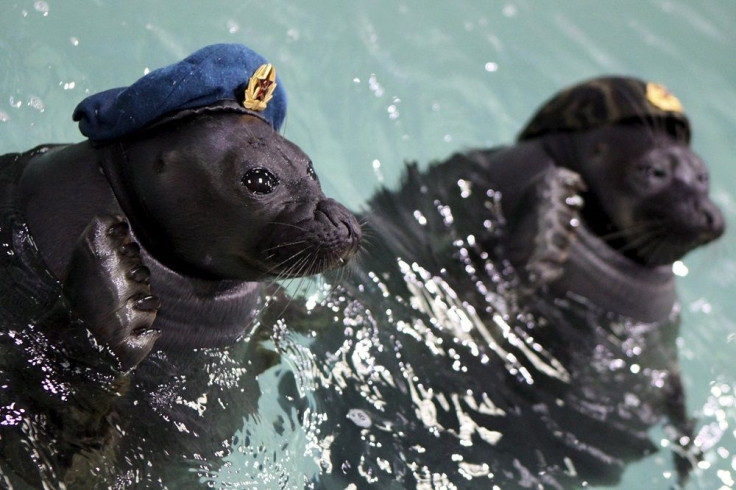Climate Change Data From Sensor-Equipped Seals Can Help New Research On Future Sea Levels

Since 2004, seals equipped with environmental sensors have been collecting data and transmitting that information over satellites to a consortium of scientists. Now, that information gathered through Marine Mammals Exploring Oceans Pole-to-Pole, or MEOP, has been made available to scientists throughout the world.
Even with advancements in undersea data collection methods, data including sea pressure, temperature, and salinity would be virtually impossible to collect. Seals, however, are able to uncover data from remote ocean regions, Engadget reported.
Scientists place the sensors on immobilised elephant seals with glue. The sensors fall off after molting, which occurs approximately every year. Similar to Twitter, the devices transmit information back to scientists via satellite. The elephant seals dive up to 60 times a day, with recorded depths as high as 7,000 feet. Since MEOP’s beginning, the project has gathered more than 300,000 environmental profiles of the sea, the report added.
According to researchers, the timing of the data’s availability is fortunate. The consortium researchers have generated research on ocean circulation and other topics. By making it available to other scientists and the public, however, the project will help generate new research on such critical climate change topics as ice cover, and of particular importance, future sea levels.
Dr Clive McMahon, operations manager with the tracking program at Australia's Integrated Marine Observing System, explained to Australian Broadcasting Corporation, "We're providing basic info on water temperature, how salty it is - salinity - and we're providing that data through the depths that the seals dive to, and that could be up to 2,000 metres."
"That data is really important in defining how circulation patterns may form, especially in the Antarctic, and how heat is taken up in the ocean. The amount of heat that is in ocean dictates things like evaporation rates or how water expands as it's getting warmer, and what that might mean for sort of coastal erosion or inundation with water from sea level rise," he added.
Professor Mark Hindell from the University of Tasmania's Institute for Marine and Antarctic Studies, meanwhile, said in the same article that seals had been able to get to parts of the ocean unreachable before by more traditional data-collection methods. "Information about, in particular, the temperature of the ocean is really fundamental in understanding climate," he said.
"The temperature from the water down in the Southern Ocean is one of the most important parts of the world to get these data, but they're really hard to get because, especially in the winter, it's dark, it's cold, it's all covered in ice. We can't get ships down there and we've been using seals to collect that information for us," he explained.
A changing climate can affect the ocean, if climate change produces a net increase in global temperatures. Ice caps melt and sea level increases, the input of cold fresh water will change the ocean circulations, which, in turn, will change weather patterns and affect global food production resulting to global hunger.
Thus, economies should stop the production of greenhouse gasses. Because of the effects of climate change, there is a growing endeavor to shift to the use of alternative energy.
More and more countries are expanding to solar energy, several companies are also investing in clean energy ventures, specialising in solar installation & PV systems. A newcomer, White Mountain Titanium Corporation (OTCQB: WMTM), located in Santiago, Chile, can provide titanium dioxide to firms providing solar power technologies. Titanium dioxide’s application in solar energy is one of the new discoveries that could help the world stop the adverse effects of climate change.
To contact the writer, email: vittoriohernandez@yahoo.com





















